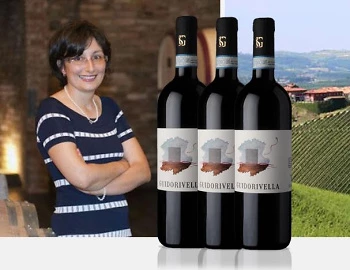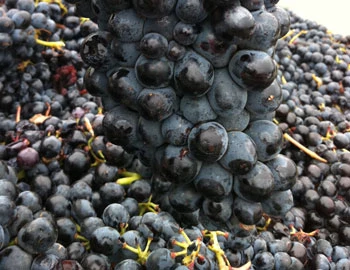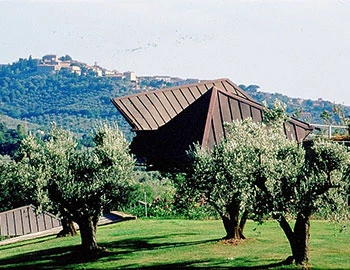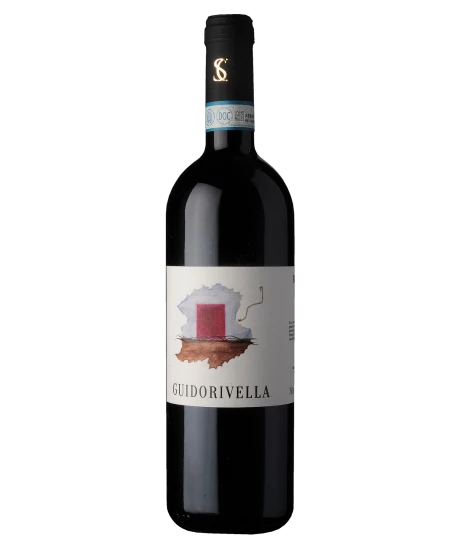Barbera d'Alba 2022
DOC, Silvia Rivella, 750 ml

Description
Aromas of ripe, dark stone fruit dominate the bouquet of this typical Barbera, accompanied by a hint of flint stone and floral notes reminiscent of chrysanthemums. The characteristic fresh acidity of this grape variety is well integrated, juicy and matches perfectly with the smooth tannins. On the palate it convinces with an intense, full-bodied taste and a long finish.
Attributes
| Grape variety: | Barbera |
| Producer: | Az. Agr. Rivella Silvia |
| Origin: | Italy / Piemont / Barbera d'Alba |
| Other vintages: | 2021 |
| Label: | Vegan |
| Ripening potential: | 2 to 7 years |
| Drinking temperature: | 16 to 18 °C |
| Food Pairing: | Italian antipasti, Latin American dishes, Moroccan specialities, Spiced grillades, Rabbit ragout with olives |
| Vinification: | long must fermentation, fermentation in steel tank |
| Harvest: | hand-picking |
| Maturation: | in used barriques |
| Bottling: | no filtration |
| Maturation duration: | 8 months |
| Volume: | 14.0 % |
| Note: | Contains sulphites |
Az. Agr. Rivella Silvia
In 2010, to crown a dream of the experienced oenologist Guido Rivella (Oenologist at Angelo Gaja for decades), who was born in Montestefano / Barbaresco, the Azienda Agricola Silvia Rivella, named after his daughter, was founded.
The province of Piedmont, which in turn includes the Langhe region, is located in north-western Italy. In this area, a UNESCO World Heritage Site, people live in a symbiotic relationship with grapevines and wine. The landscape itself is ideal for viticulture, as it consists of a series of gently rolling hills. Each of these is covered with vines and divided into different plots called "crus" (as in Burgundy). Almost every cru is cultivated individually, so that the character of each vineyard is reflected in its wine. Nebbiolo is the dominant grape variety. Different wines are produced from it, with Barolo and Barbaresco - often called the king and queen of wines - the most famous of these. Both wines have a potential for long-term storage that is almost beyond compare, along with a complexity and tannin structure that is found in few other wines worldwide.
Often overshadowed by its more "masculine" counterpart, Barbaresco is a wine of great elegance and finesse, which genuinely evokes a feminine quality. Barbaresco can only be produced from Nebbiolo, and the grapes may come only from the villages of Barbaresco, Neive, Treiso and Alba. The region also produces Barbera, Dolcetto, Freisa, Arneis and Pelaverga, as well as a small amount of Merlot, Cabernet Sauvignon, Sauvignon Blanc and Chardonnay, all of which are used in the creation of some wonderful wines.

Barbera
The all-around culinary companion
The Barbera grape is one of the cornerstones of the Piedmont. It lends its name to three cultivation areas: Barbera d’Asti, Barbera d’Alba and Barbera di Monferrato. There are fierce rivalries. Thus the vintners of Asti assert that their Barbera is better than those from Alba, because the best sites in Alba are reserved for Barolo and Barberesco. The truth is, there are all kinds of Barbera: young and fruity, ripe and complex, simple or sophisticated. The best representatives are ruby red with pure, sweet cherry fruit, soft body and fresh acidity. They are fantastic culinary companions: there is scarcely any Italian dish with which they do not fit. The variety is well-distributed, thanks to the Italian emigrants in California.

Italy
Italy – Where wine is a way of life
The Italian wine regions are extremely diverse, and this is made clear in their wines. Established varieties such as Merlot, Syrah, and Sauvignon can be found on just 15 percent of the total vine growing area. The remaining 85 percent is reserved for autochthonous, indigenous varieties. More than 2,000 different grape varieties are grown under diverse conditions and pressed with various techniques into wines that reach the top tier of the international wine market.



